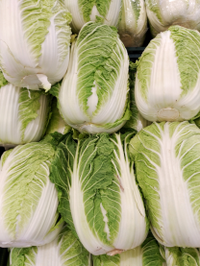
Transcriptome Analysis of Sclerotinia sclerotiorum at Different Infection Stages on Brassica napus
Sign Up to like & getrecommendations! Published in 2017 at "Current Microbiology"
DOI: 10.1007/s00284-017-1309-8
Abstract: Sclerotinia sclerotiorum is one of the most important plant pathogens, causing enormous losses in a variety of economically important crops including Brassica napus. The interaction of S. sclerotiorum with its hosts is more complex than… read more here.
Keywords: transcriptome analysis; sclerotinia sclerotiorum; infection; sclerotiorum ... See more keywords

Activity of Purpureocillium lilacinum filtrates on biochemical characteristics of Sclerotinia sclerotiorum and induction of defense responses in common bean
Sign Up to like & getrecommendations! Published in 2019 at "European Journal of Plant Pathology"
DOI: 10.1007/s10658-019-01748-5
Abstract: White mold of common bean caused by Sclerotinia sclerotiorum is a serious disease in temperate and subtropical regions. The present study evaluated the effects of culture filtrates of Purpureocillium lilacinum on S. sclerotiorum under in… read more here.
Keywords: common bean; sclerotinia sclerotiorum; purpureocillium lilacinum;

Coping with stress: role of Arabidopsis phytoglobins in defence against Sclerotinia sclerotiorum
Sign Up to like & getrecommendations! Published in 2020 at "Journal of Plant Biochemistry and Biotechnology"
DOI: 10.1007/s13562-020-00615-3
Abstract: Phytoglobins (Pgbs) are multifaceted stress-responsive proteins implicated in regulating various physiological and stress-responsive pathways in plants. Previous work has demonstrated NO dioxygenase and peroxidase-like activity of Arabidopsis phytoglobin 3 (AHb3) and its potential role in… read more here.
Keywords: arabidopsis phytoglobins; sclerotinia sclerotiorum; role; rnai ... See more keywords

Inhibitory effect of natamycin against carrot white mold caused by Sclerotinia sclerotiorum
Sign Up to like & getrecommendations! Published in 2020 at "Tropical Plant Pathology"
DOI: 10.1007/s40858-020-00369-2
Abstract: This study was conducted to evaluate inhibitory effect of natamycin against three isolates of Sclerotinia sclerotiorum, the causal agent of carrot white mold in postharvest phase. The results showed that natamycin was able to markedly… read more here.
Keywords: effect natamycin; sclerotinia sclerotiorum; white mold; sclerotiorum ... See more keywords

Morphological and protein alterations in Sclerotinia sclerotiorum (Lib.) de Bary after exposure to volatile organic compounds of Trichoderma spp.
Sign Up to like & getrecommendations! Published in 2020 at "Biological Control"
DOI: 10.1016/j.biocontrol.2020.104279
Abstract: Abstract Trichoderma fungi have an important potential for the control of plant diseases due to their various mechanisms of action, such as the production of volatile organic compounds (VOCs). The phytopathogenic fungus Sclerotinia sclerotiorum (Lib.)… read more here.
Keywords: protein; sclerotinia sclerotiorum; organic compounds; volatile organic ... See more keywords

Selenium as a potential fungicide could protect oilseed rape leaves from Sclerotinia sclerotiorum infection.
Sign Up to like & getrecommendations! Published in 2019 at "Environmental pollution"
DOI: 10.1016/j.envpol.2019.113495
Abstract: Sclerotinia sclerotiorum (S. sclerotiorum) is a soil-borne pathogen causing serious damage to the yield of oilseed rape. Selenium (Se) acted as a beneficial element for plants, and also proved to inhibit the growth of plant pathogens.… read more here.
Keywords: rape leaves; sclerotinia sclerotiorum; sclerotiorum infection; rape ... See more keywords

Bioassay-guided isolation of antifungal amides against Sclerotinia sclerotiorum from the seeds of Clausena lansium
Sign Up to like & getrecommendations! Published in 2018 at "Industrial Crops and Products"
DOI: 10.1016/j.indcrop.2018.05.037
Abstract: Abstract Clausena lansium (Lour.) Skeels is an attractive shrub or small tree, a member of the Rutaceae family. The seeds, leaves and roots of this plant have been used as herbal medicines for a long… read more here.
Keywords: sclerotinia sclerotiorum; bioassay guided; clausena lansium; sclerotiorum ... See more keywords

Melatonin elevated Sclerotinia sclerotiorum resistance via modulation of ATP and glucosinolate biosynthesis in Brassica rapa ssp. pekinensis.
Sign Up to like & getrecommendations! Published in 2021 at "Journal of proteomics"
DOI: 10.1016/j.jprot.2021.104264
Abstract: Sclerotinia stem rot is a common disease found in Brassica rapa that is caused by the necrotic plant pathogen Sclerotinia sclerotiorum. Melatonin (MT) has known biological activity and effectively relieved this type of Sclerotinia stem… read more here.
Keywords: rapa; sclerotinia sclerotiorum; brassica rapa; sclerotiorum ... See more keywords

Antifungal potential against Sclerotinia sclerotiorum (Lib.) de Bary and plant growth promoting abilities of Bacillus isolates from canola (Brassica napus L.) roots.
Sign Up to like & getrecommendations! Published in 2021 at "Microbiological research"
DOI: 10.1016/j.micres.2021.126754
Abstract: Endophytic bacteria show important abilities in promoting plant growth and suppressing phytopathogens, being largely explored in agriculture as biofertilizers or biocontrol agents. Bacteria from canola roots were isolated and screened for different plant growth promotion… read more here.
Keywords: sclerotinia sclerotiorum; plant; antifungal potential; plant growth ... See more keywords

Molecular and biological characterization of Sclerotinia sclerotiorum resistant to the anilinopyrimidine fungicide cyprodinil.
Sign Up to like & getrecommendations! Published in 2018 at "Pesticide biochemistry and physiology"
DOI: 10.1016/j.pestbp.2018.03.001
Abstract: Cyprodinil belongs to the chemical class of anilinopyrimidines fungicides. In this study, baseline sensitivity of Sclerotinia sclerotiorum (Lib.) de Bary to cyprodinil was determined using 100 strains collected from the fields in Jiangsu Province of… read more here.
Keywords: sclerotinia sclerotiorum; sclerotiorum; cyprodinil; resistance ... See more keywords

Efficacy of UV-C radiation in inducing systemic acquired resistance against storage carrot rot caused by Sclerotinia sclerotiorum
Sign Up to like & getrecommendations! Published in 2017 at "Postharvest Biology and Technology"
DOI: 10.1016/j.postharvbio.2017.04.009
Abstract: Abstract This research was carried out to assess inhibitory effect of UV-C (0.88 kJ m −2 ) against four isolates of Sclerotinia sclerotiorum , causal agent of carrot rot, in vitro and in vivo . A bank… read more here.
Keywords: sclerotinia sclerotiorum; systemic acquired; carrot; carrot rot ... See more keywords